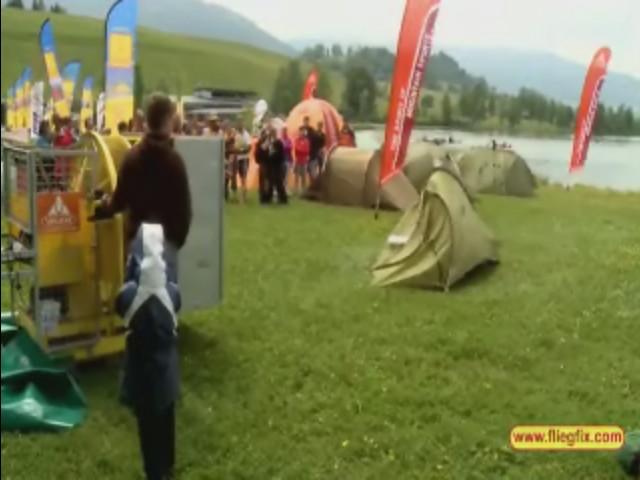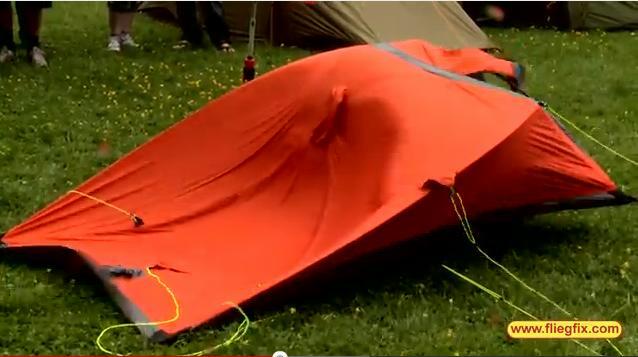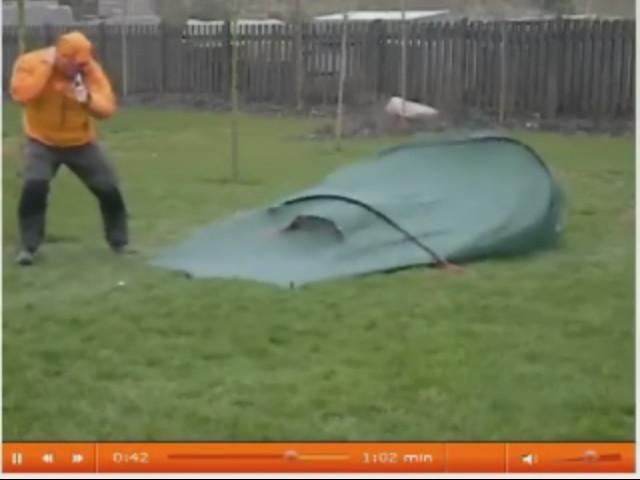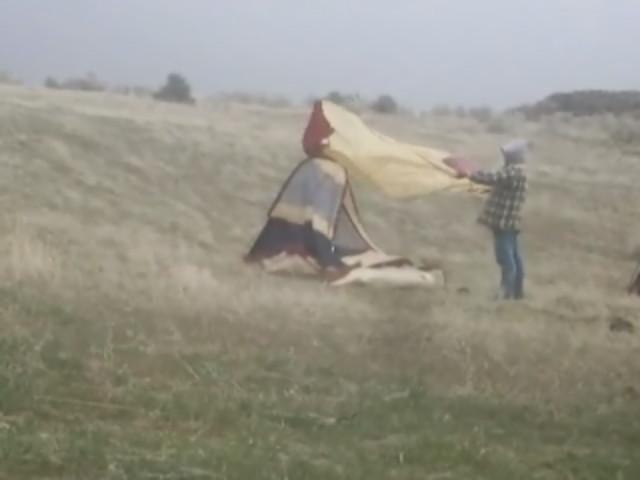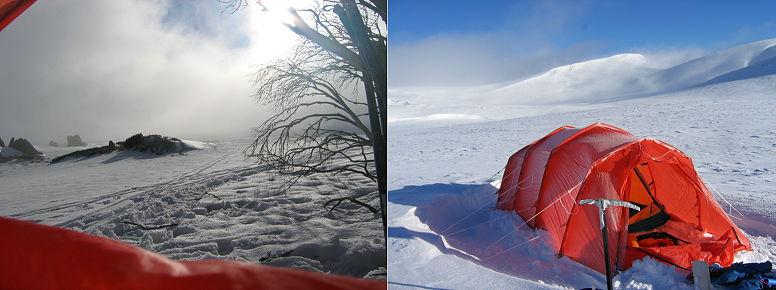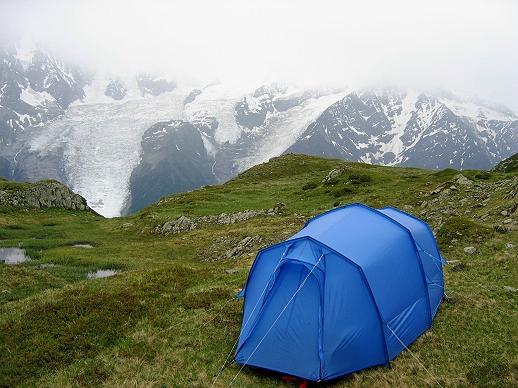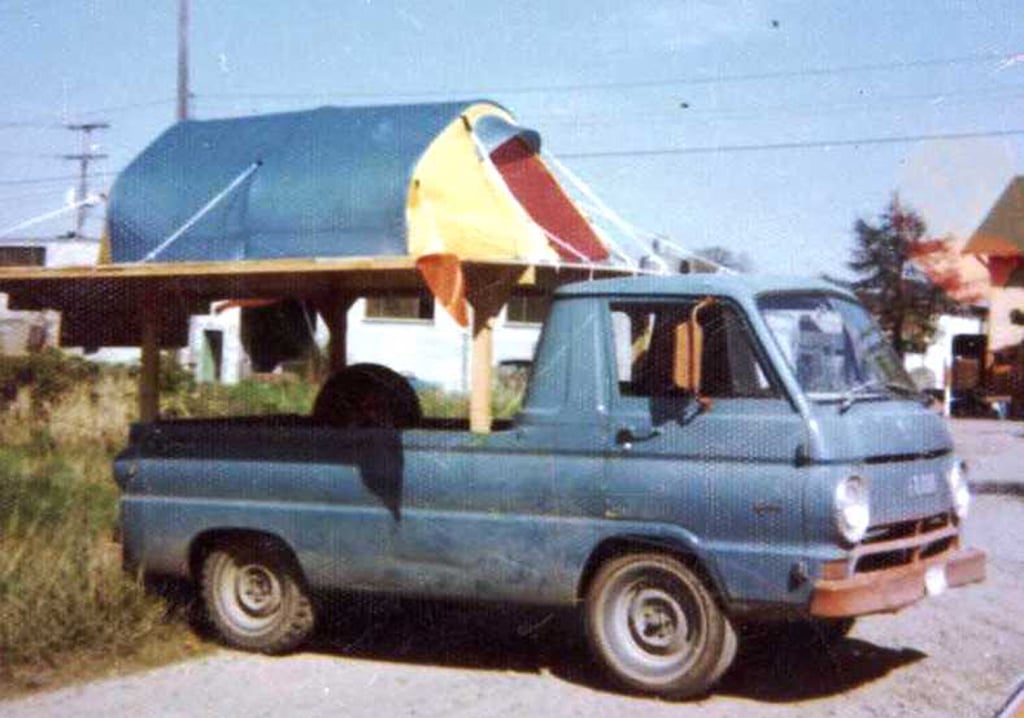Topic
MSR has a new tunnel tent – the TindHeim
Forum Posting
A Membership is required to post in the forums. Login or become a member to post in the member forums!
Home › Forums › Gear Forums › Gear (General) › MSR has a new tunnel tent – the TindHeim
- This topic has 69 replies, 16 voices, and was last updated 1 year, 11 months ago by
 Roger Caffin.
Roger Caffin.
-
AuthorPosts
-
Feb 15, 2023 at 7:06 am #3773284
I know that Roger likes tunnel tents vs “pop-up” dome style tents popular here in the US.
Oddly, I can’t seem to find this tent on msrgear.com . When I follow a Google link that seemingly points to it, I’m taken to an overview page for their tents. Since I’m a US resident, I wonder if MSR is only offering this tent for sale in the EU/UK.
Here’s the link:
https://www.msrgear.com/ie/tents/backpacking-tents/tindheim-2-person-backpacking-tunnel-tent/10832.htmlI’d be curious if someone outside the US can access it.
Feb 15, 2023 at 7:19 am #3773285I couldn’t resist being curious, so I installed one of those VPN services that lets a person appear as if they’re coming from another country. Sure enough – I can successfully then visit the link on msrgear.com and read about this tent.
I find it odd that MSR limits the ability of US residents to even read about this tent.
Feb 15, 2023 at 7:21 am #37732865.5 pounds – not lightweight
I see they have a floorless mid – 26 ounces – they call it featherweight but I’d call it not lightweight – out of stock currently
Feb 15, 2023 at 7:33 am #3773287Definitely not lightweight. I guess I would consider this as a competitor to other severe weather tunnel tents like Hilleberg.
It caught my interest because I’m considering hiking the Laugavegur trail, plus the extension south to Skogar in 2024. Sections of the trail seem to be particularly windy. Thru-hiker “Dixie” on her “Homemade Wanderlust” youtube page did the trail last year, and it looked like her Duplex was in danger of getting blown to bits. Hence my thinking that perhaps I need something more robust than my Stratospire 2 (or maybe I don’t. Not sure.)
Feb 15, 2023 at 7:58 am #3773288Obv geared towards the northern EU market, even with a Norwegian sounding name (PeakHome).
With only one door and two poles of similar length it will be mostly comparable to the Nammatj. It also likely means the foot end wall is sloping inwards, so adequate floor length is needed to keep tall users from rubbing their bag.
Feb 15, 2023 at 3:04 pm #3773298…the Laugavegur trail, plus the extension south to Skogar in 2024. Sections of the trail seem to be particularly windy.
Yep! And it can be tough to get good purchase with stakes, sometimes because of rocky ground, sometimes several inches of moss on the ground. Windy, wet, gritty, gorgeous.
Feb 15, 2023 at 3:47 pm #3773300Yes, also visible in France.
The Tindheim is much bigger than the Nammatj. The length of the inner alone is 2.4m, 7.8 ft. The entire length is 4m, fully one meter longer than the Nammatj. It’s also wider.
Somewhat unusually, the Tindheim fly is made with PU coated 68D polyester, not the superlative silnylons regularly used by Scandinavian manufacturers such as Hilleberg, Nordisk, Fjallraven, Helsport, etc. Yet it isn’t much heavier than the Nammatj.
It’s primarily a value proposition. The price is only half that of the hideously expensive Nammatj in Europe. The design isn’t innovative but the details look well thought out.
Feb 15, 2023 at 3:49 pm #3773301Interesting.
But it is a long time since I contemplated making a TWO-pole tunnel tent. Tail-end into the wind it would be OK, but that long unsupported side between the poles is an invitation to failure in a high wind. (I speak from experience!) And there aren’t any guys to the middle of the very long panel either. Sad.
At a minimum you need three poles. This halves the length of the panels and makes them much more able to handle the wind.
I note that MSR are not pitching this as a full-on winter tent. Their own marketing says
The Tindheim 2 is designed for campers, weekend warriors and backpackers who want to make the most of their three-season adventures with a shelter that is highly livable, durable and ready for the weather.
Yes, well, it would be quite a good tent for that. And it has a respectable vestibule.Tentative suggestion: MSR is making a very hesitant step into the water. Unfortunately, a half-way move with a poor design could backfire on them if customers try to use this as a hard-core winter tent, leaving them with burnt fingers and left-overs. Eh, maybe not. Maybe the MSR brand and limited production will avoid financial disaster. Maybe most of their customer base will use this in sheltered -three-season conditions. If so, they will be comfortable.
My verdict is a bit ambiguous. It is not a full-on winter alpine tent, but it might be a quite comfortable 3-season sub-alpine one. Pity it is so heavy though (3.2 kg), and a pity the packed volume is so big.
Cheers
Feb 15, 2023 at 5:18 pm #3773305“My verdict is a bit ambiguous. It is not a full-on winter alpine tent, but it might be a quite comfortable 3-season sub-alpine one. Pity it is so heavy though (3.2 kg), and a pity the packed volume is so big.”
In that case, I don’t see the advantage of carrying such a heavy three season tent, even in windy areas, instead of any number of comparably performing, or better performing, lighter tents. This assumes that Roger’s critique concerning the two pole design is correct. Maybe spaciousness alone is worth it for some.
Feb 15, 2023 at 6:04 pm #3773306<p style=”text-align: left;”>From Hilleberg the 2p Nallo, Nammatj, and Anjan 3 all appear to be 2 pole tents.</p>
Feb 15, 2023 at 8:04 pm #3773317the 2p Nallo, Nammatj, and Anjan 3 all appear to be 2 pole tents.
I stand by my comments.
They may be fine 3-season sub-alpine tents.
But you can not get past the long weak stretch of fabric between the poles.Cheers
Feb 15, 2023 at 10:43 pm #37733193.2 kilos make the other concerns academic.
Feb 16, 2023 at 12:20 am #3773322I own the MSR Tindheim and have been using it this winter, near and in Rocky Mountain National Park, subalpine and alpine.
In spite of marketing’s disclaimers that suggests it’s a 3+ season tent (a delightful surprise), I think this is a pretty solid 4-season alpine tent as long as you’re not getting too crazy with extreme conditions.
The span between the two poles isn’t huge, and six guylines can be wrenched down pretty tight to pull the tension between them extremely well.
Full solid inner and enough guylines make this a 4-season tent.
It doesn’t stand up to the manufacturing quality of a Hilleberg. It doesn’t pitch *quite* as tight and the sewing isn’t as straight. The fabrics are definitely inferior. We’ll see how it does over the long term.
The weight is fine, comparable to a Hilleberg Soulo (but not as stable), but much more roomy obviously if you’re solo.
Vestibule space is nice, you can easily cook in there.
Compared to the Nammatj, The weight of the fly fabric is ridiculous, and the bulk is obscene. I’m not happy about either of those choices. This is the price you pay for lower cost I guess.
I need more time with this in severe wind and snow before I can make more definitive conclusions, though…
Feb 16, 2023 at 1:45 am #3773326The heavy mid priced tunnel tent is a very crowded market segment in Europe. For that matter, the high end segment is crowded, too.
Tatonka, Wechsel, Robens, Frilufts, Ferrino, High Peak, Nomad… Those names are just off the top of my head. There must be lots of others that make tunnel tents under 500€.
I guess that MSR guarantees a certain high level of quality and service but I wonder.
In terms of value, it would be hard to beat the offerings from Naturehike, which is less than half the price of the Tindheim. https://www.naturehike.nl/lightweight-tunneltent-2p
The Free Spirits Yoto Pro is probably the only commercially manufactured tunnel that has really interested me over the past few years. Sadly, it is out of production. Even sadder, the country of origin (China) was cause for baseless criticisms of piracy, in complete disregard of the innovative design details brought to the timeless tunnel design. Originally priced at a point very close to the MSRP of the Tindheim, the Yoto Pro was both amazing value and top of the line in its class. A 3+ season tunnel touting a host of functional pitch options, the Yoto Pro came in at under 1.5kg trail weight.
Feb 16, 2023 at 2:07 am #3773328May I set a baseline here? Nails flag to mast:
A span of more than 1,000 mm between poles on the ground is too long. Most of those 2-pole tents have a span of close to 2,000 mm between poles.Many tunnels have outward tilted poles at the ends, which means that there can be a span a bit longer than 1,000 mm at the top. As the wind at the top is already going over the tent, I do not think this matters very much – and the tilted pole-arches look good too.
But if you stay out of the wind, a 2-pole tunnel can be quite comfortable. Here on the East coast of Oz we cannot guarantee staying out of the wind. Perhaps I am baised?
Cheers
Feb 16, 2023 at 2:32 am #3773329Roger,
Wouldn’t the baseline also have to specify what level of wind resistance is being aimed for?
One of the advantages of the tunnel design is the amount of flexibility. Is there a level of deflection that is unacceptable? How to quantify it? If I recall correctly, your tunnels are designed precisely not to be so wildly flexible.
Or is the baseline simply catastrophic failure?
I ask this question because what I’d really love to see are some standardized tests for wind resistance. I mean, we do have instruments for measuring wind speed, and we do know that wind speed varies directly in proportion to distance from the ground. But we don’t really have a measure for the interaction between wind and tent.
All best,
JonFeb 16, 2023 at 10:41 am #3773339For the weight a Hilleberg Kaitum 2 is only four oz. heavier (it’s min weight is 5 Lbs + 11oz.), and has the crucial middle pole. Of course, way more $$.
Feb 16, 2023 at 11:00 am #3773343But the spacing between the poles is the same as the Nammatj.
The Tindheim, however, is almost as long as the Kaitum but only has two poles. (The Nammatj is approx one meter shorter than the Kaitum).
Feb 16, 2023 at 12:31 pm #3773347Interesting to hear that Ryan has one for testing. The weight & bulk do sound concerning.
By the way this is not MSR’s first foray into tunnel tents. Back around 2010 they had the MSR DragonTail 2 on the market. This was a 2-person, single walled, tunnel tent design. Here is a review of it at OutdoorGearLab.
I think I don’t think it did very well on the market. It will be interesting to see how the Tindheim does. MSR has had their share of market successes and failures.
Feb 16, 2023 at 4:50 pm #3773354Hi Jon
a measure for the interaction between wind and tent.
When you think about the complexity of that problem, and the number of independent and unspecified variables, one has to doubt the feasibility of having a single measure.is the baseline simply catastrophic failure?
Well, that is one very clear ‘measure’, isn’t it?A European company Fliegfix used to do some tent testing with a large wind machine. In effect, they tested a whole range mostly close to destruction.

and

Another group (from Hardanger) did the same

Then you have the fairly well-known problems people have had with pop-ups:

One might ask what is the most important criterion in assessing a tent. IMHO, apart from the simple Q of ‘did it collapse?”, a more refined Q would be ‘does it flap?”. Some do collapse (as above), and some don’t (as below). This one survived a 100 kph wind overnight, without damage. I had trouble standing up in that wind in the morning.

But, as many will ask, does everyone need this level of performance? Probably not. And good tunnels are not cheap.
Cheers
Feb 16, 2023 at 11:37 pm #3773361Fliegfix did those tests in combo with selling aftermarket poles.
I have one set of 8mm carbon poles (much stronger than standard alu at half the weight) and one set of 11mm scandium poles for the Hilleberg Soulo that I purchased from Fliegfix back in the day when they were doing that.The thing about the scandium poles is that while they are much stiffer than alu alloy ones, that stiffness is actually a minus for precisely the sort of conditions we’re talking about. Scandium will tend to break where alu will bend. This from Hilleberg, who tested and finally rejected the use of scandium poles. Note that tunnels make up the majority of their tent line.
Being able to flex and to bend, even wildly so, is the last line of defense for the hooped tunnel tent and its ultimate source of greatest strength.
Carbon poles don’t allow for that kind of flex, either.
At this point in my life, flap-free performance is very high on the list of what I value in a shelter, along with light weight and reliability of pitching. Hence, the move from rectangular to octagonal mids.
Yet I recognize that a discussion about tunnels, of which I’ve used many, should not overlook their secret weapon: the ability to flex wildly without catastrophic failure.
Feb 17, 2023 at 2:52 am #3773363Easton used to sell some 7178 alloy poles, which I THINK were the scandium alloy. I took a set to the Pyrenees a long time ago. They work-hardened after some weeks and snapped, on the last day! I had to replace them with the more common 7075 T9 alloy poles, which are far more reliable.
Being able to flex and to bend, even wildly so, is the last line of defense for the hooped tunnel tent and its ultimate source of greatest strength.
I have to totally disagree here. My version of it all is that I do not let the poles flex and bend, not one inch, and certainly not ‘wildly’. By combining guy ropes and fabric panels I prevent the poles from flexing at all. Ah – plus the magic sauce: very high length-wise tension in the fabric.In my experience, most owners of tunnel tents do not pitch their tents with even 10% of the required tension. This leaves the fabric slack at times, and that leads to Bad Things (TM). Have a look here:

That was on a high pass opposite Mont Blanc in bad weather, but the tent was fine, all night. To see why, note carefully the very tight fabric: as tight as a drum. It was not going to move. The reason was that the bungee cord loops at the corners were stretched very tightly. You can see one of them (black) at the left front corner.
Could the fabric ‘burst’ at these high tensions? Not a chance: it was nowhere near its tear strength. By and large, synthettic fibre tent fabric rarely is in danger (barring tree branches etc). Nylon is especially good as it has inherent elasticity. I cannot say the same for DCF as I have seen failures there.
A note in passing about this. NEVER EVER put bungee cord at the windward end. You absolutely do NOT want the windward end to move one millimetre. I remember watching a video from inside a (3rd-party) tunnel of the windward end shaking fanatically: they had put bungee loops to windward, and they flexed. Very short loops of 3 mm nylon cord are excellent.
Cheers
Feb 17, 2023 at 3:45 am #3773364Being able to flex and to bend, even wildly so, is the last line of defense for the hooped tunnel tent and its ultimate source of greatest strength.
I have to totally disagree here. My version of it all is that I do not let the poles flex and bend, not one inch, and certainly not ‘wildly’. By combining guy ropes and fabric panels I prevent the poles from flexing at all. Ah – plus the magic sauce: very high length-wise tension in the fabric.Of course YOU disagree, because that’s how YOU made YOUR tent. The choice of carbon fiber poles alone indicates a completely different strategy, from which things like shorter distance between poles become necessary complementary decisions.
But that isn’t how major manufacturers with skin in the game of polar expedition-worthy tunnel tents, aka Hilleberg, Helsport, etc., make theirs. You seem to enjoy taking an absolutist position that is extremely dismissive of the choices made by leading manufacturers with a proven track record under the worst conditions. I’ll let you debate that with them.
I’m perfectly willing to concede that your design is superior and I’m sad that your ideas about tunnel tent design never got the wide recognition that they deserve. I would, as you know, have been keen on purchasing one of your tunnels. But good ideas are not the negation of other sound approaches. Why does every discussion of tunnel tents always come around to “XXX didn’t design their tent like mine, hence, XXX’s product sucks”? Who could possibly believe that a Hilleberg Nammatj with a 1 meter distance between the poles is fundamentally unsuited because of that design choice to the extreme conditions in which it has proven itself over decades? Would yours be better? Probably. Is it available? No.
Feb 17, 2023 at 4:14 am #3773367I actually had a Nammatj (I’ve also owned and tried a Keron, a Kaitum, a Nallo, an Unna, a Soulo, and a Niak from the Hilleberg stable). That was when I was younger and loved to do crazy things like taking it for a spin in the mountains precisely when a typhoon was forecast. Before the cellphone era, so no photos. Did the same with one of the earliest versions of the MLD Duomid. Both survived a riot of vicious full on typhoon winds.
Feb 17, 2023 at 7:34 am #3773369MSR used to test tents by putting on top of an automobile going down the highway

-
AuthorPosts
- You must be logged in to reply to this topic.
Forum Posting
A Membership is required to post in the forums. Login or become a member to post in the member forums!
Our Community Posts are Moderated
Backpacking Light community posts are moderated and here to foster helpful and positive discussions about lightweight backpacking. Please be mindful of our values and boundaries and review our Community Guidelines prior to posting.
Get the Newsletter
Gear Research & Discovery Tools
- Browse our curated Gear Shop
- See the latest Gear Deals and Sales
- Our Recommendations
- Search for Gear on Sale with the Gear Finder
- Used Gear Swap
- Member Gear Reviews and BPL Gear Review Articles
- Browse by Gear Type or Brand.

